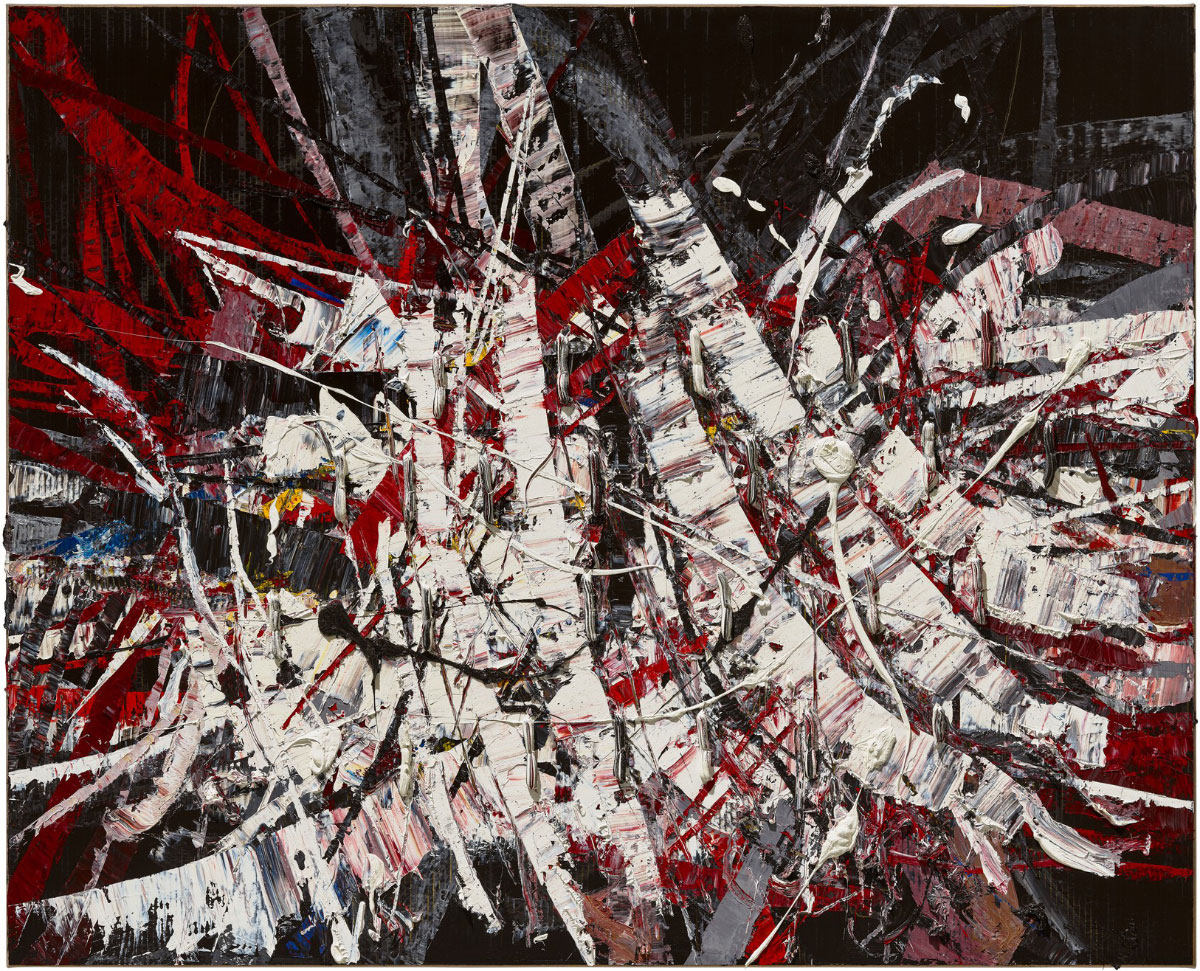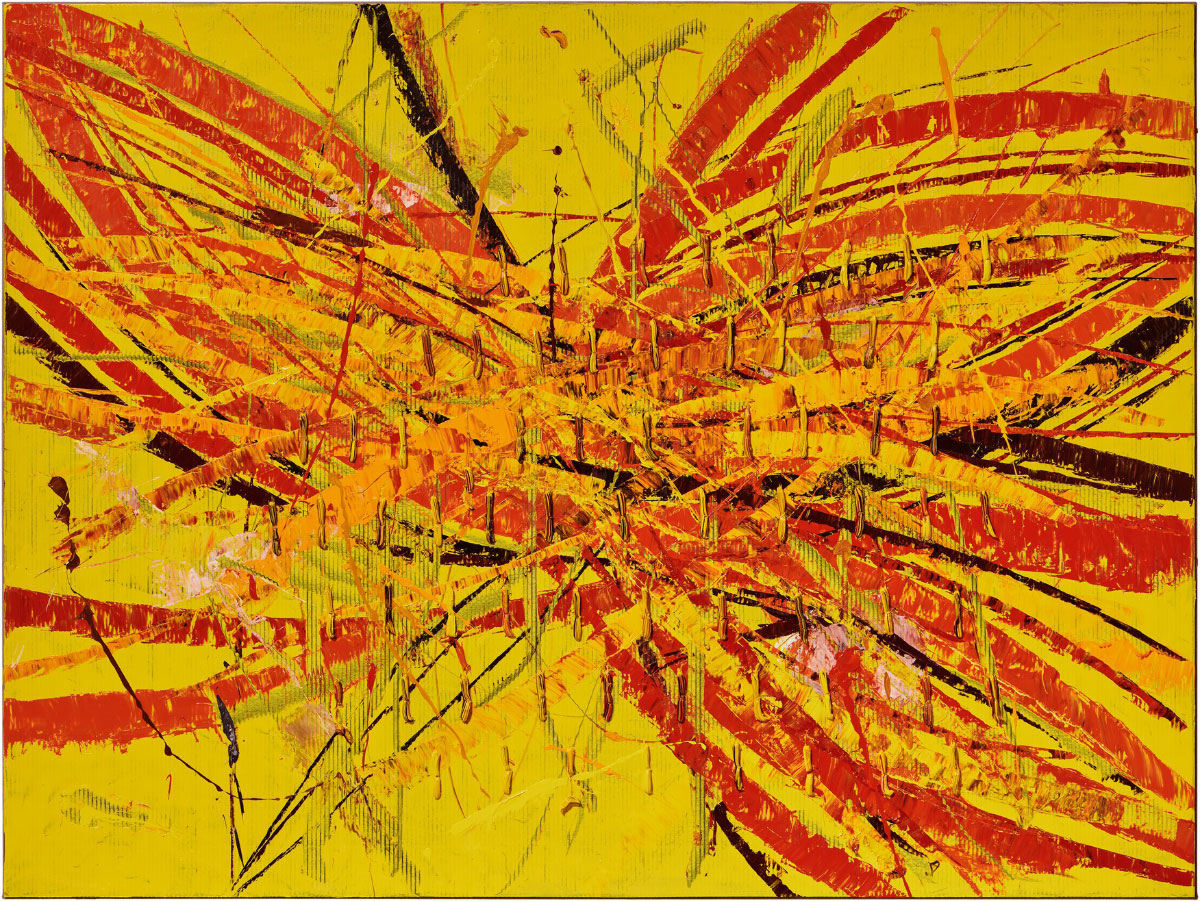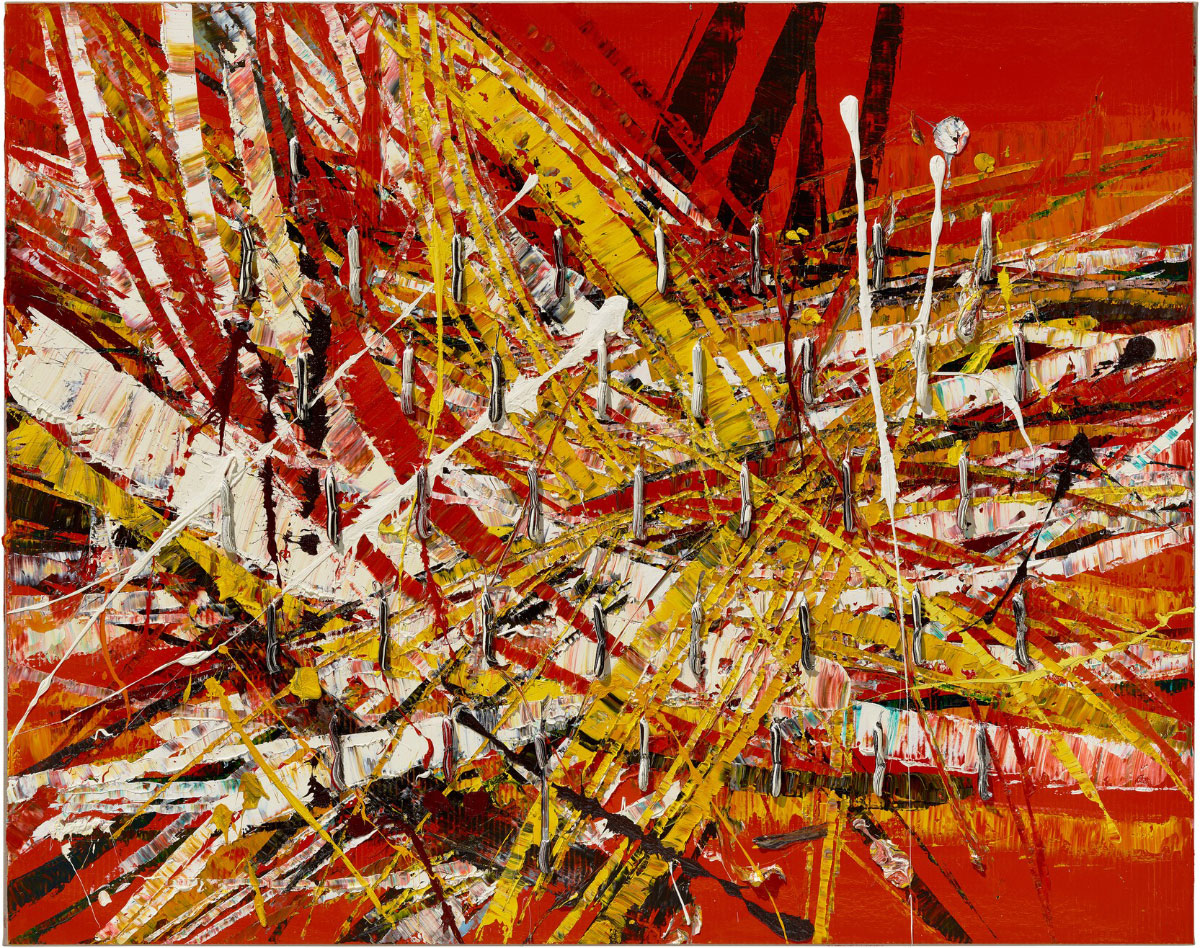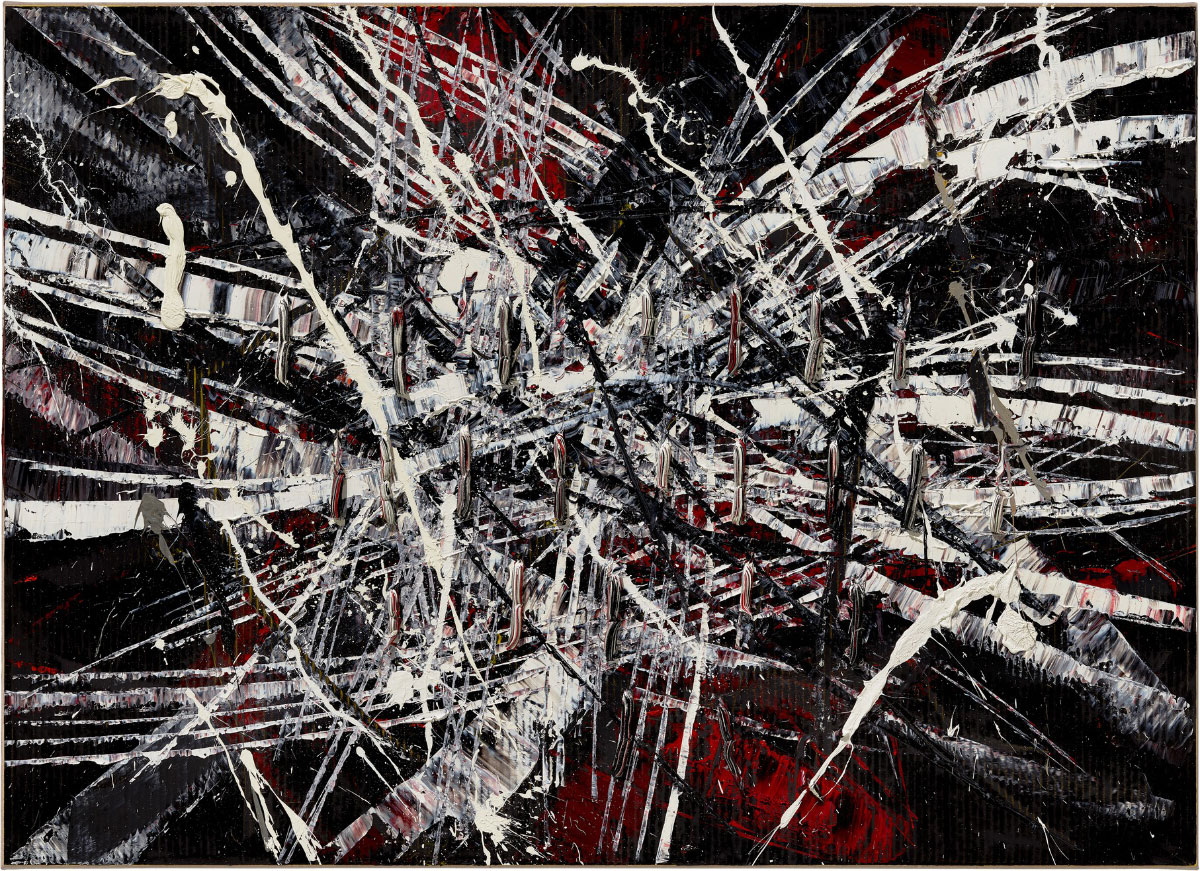ART CITIES: London-Mark Grotjahn
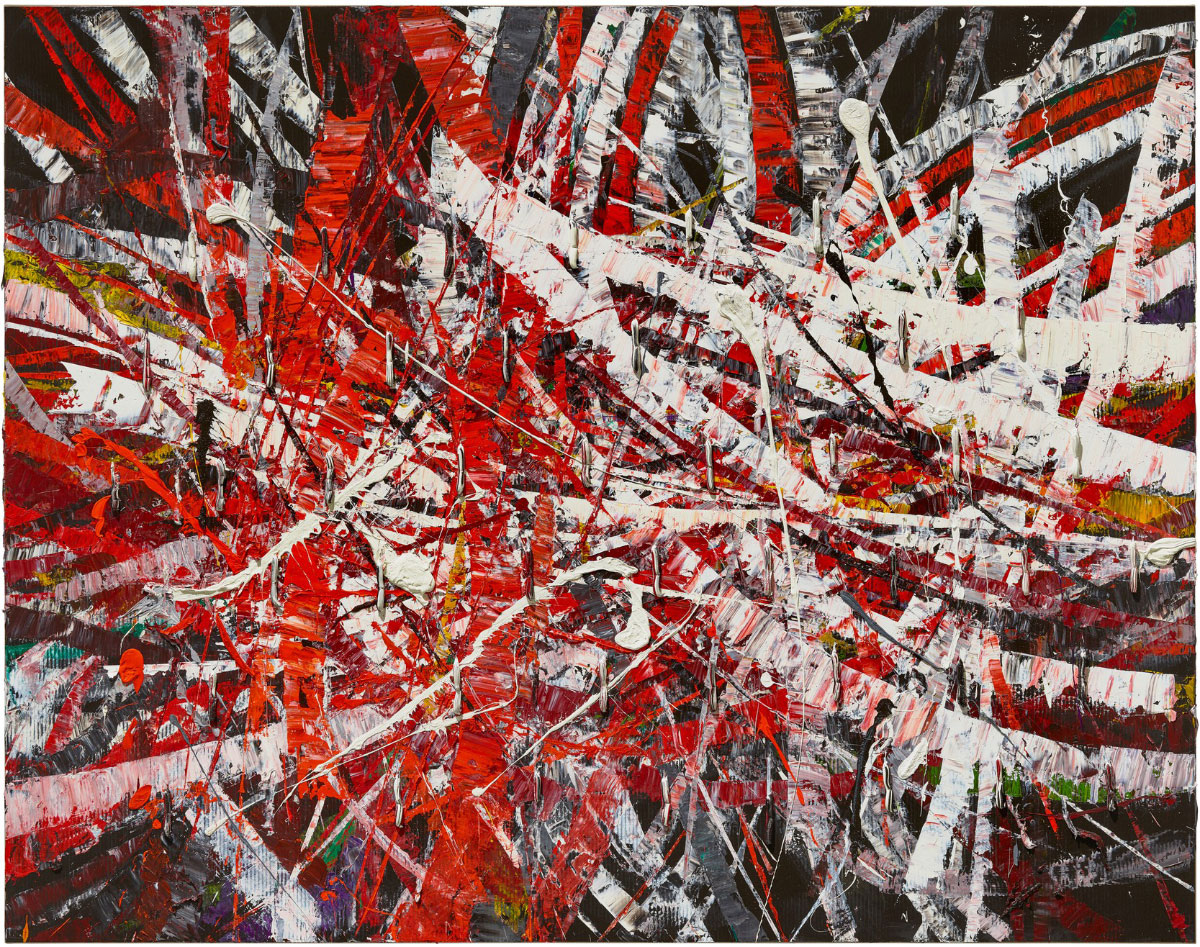 Mark Grotjahn has developed a practice that merges abstraction and figuration, and geometry and gesture. With an oeuvre encompassing paintings, sculptures, and works on paper, he strikes a balance between exacting rigor and intuition and improvisation. The artist’s contextual influences range widely from the history of geometric modernism in the works of artists such as Mondrian and Malevich, to experiments in musical and filmic composition and typographic design.
Mark Grotjahn has developed a practice that merges abstraction and figuration, and geometry and gesture. With an oeuvre encompassing paintings, sculptures, and works on paper, he strikes a balance between exacting rigor and intuition and improvisation. The artist’s contextual influences range widely from the history of geometric modernism in the works of artists such as Mondrian and Malevich, to experiments in musical and filmic composition and typographic design.
By Dimitris Lempesis
Photo: Gagosian Archive
In his paintings, Mark Grotjahn interweaves various modes of abstraction, employing an expansive and evolving vocabulary of motifs and techniques. Exploring color, perspective, seriality, and the sublime, he also reflects on the broad history of nonrepresentational painting, from ancient to modern times. In his solo exhibition “Backcountry”, Mark Grotjahn moves still further away from the anthropomorphic underpinnings of earlier series such as “Masks” (2000- ) and Face (2003-17), alluding instead to rural landscape while edging closer to an entirely spontaneous mode of expression. Most of the paintings on view in are in a horizontal format on black grounds; all of them are executed in Grotjahn’s favored medium of oil on linen-mounted cardboard, which he scrapes and sometimes carves into, revealing layers of paint. The “Backcountry” series (2021- ) follows from a body of work produced in 2016 for an exhibition at Casa Malaparte on the Italian isle of Capri. Inspired by the landmark modernist house of writer Curzio Malaparte, Grotjahn inaugurated the “Capri” series of paintings with a group titled “New Capri”, the compositions of which evoke the house’s clifftop setting. In “Backcountry”, the title of which was suggested by the artist’s ski touring and fly-fishing activities in Colorado, Grotjahn again explores the formal and expressive possibilities of paint, experimenting further with abstract mark making, color, and texture, combining systematic structure with gestural spontaneity. In using black grounds with different colored substrates, he aims to give the paintings a graphic muscularity, imparting a different feel from that of his previous white paintings. Featured paintings include “Untitled (Backcountry Capri 54.79)” (2022), a composition distinguished by wide, ragged streamers of white and red that arc across deep black. These elements are interrupted by others, among them a skein of drips and a loose grid of “slugs”—small rolls of paint that Grotjahn manufactures by scraping off and reattaching excess impasto to the surface of the work. These dimensional components rest on clusters of vertical and horizontal strokes, disrupting the overall composition both visually and texturally. Grotjahn has described the slugs as being “the scar on the arm that makes the arm more beautiful”. Other works in “Backcountry” are marked by lines of paint that collide to produce distinctive almond-shaped outlines, forms that hark back to the stylized eyes of the Face series. In general, however, Grotjahn’s new paintings display a broader style of application than generally characterizes his earlier work, and by an ever deeper immersion in the nonobjective, reflecting a commitment to color, texture, line, and movement. Ultimately, the paintings in Backcountry convey an embrace of the freedom offered by the scale and power of nature.
Mark Grotjahn was born in Pasadena, California. He received a BFA from the University of Colorado at Boulder and an MFA from the University of California at Berkeley. While studying in California, he began his first major project, Sign Exchange (1993–98), in which he painted replicas of signs that he saw in stores around Los Angeles, then had the store owners display his hand-painted versions in place of the originals. In 1995 Grotjahn was an artist-in-residence at the Skowhegan School of Painting and Sculpture in Madison, Maine. He moved to Los Angeles a year later and, with his classmate Brent Petersen, opened the short-lived gallery Room 702. In 2001 Grotjahn began the “Butterfly” series. These geometric paintings and drawings explore the constructs of dual and multi-point perspective and take on various forms as Grotjahn alters their composition and color. A selection of multicolored and monochromatic Butterfly works on paper were exhibited in 2005 at the Hammer Museum, Los Angeles. In 2018 the Los Angeles County Museum of Art presented “50 Kitchens” (2013–18), from the same series, a work with more than fifty parts that all evolved from a single composition and incorporate residual traces of earlier drawings. Continuing his investigations of symmetry, perspective, and form, Grotjahn began the “Face” paintings in 2003. These expressive, anthropomorphic works of cardboard on canvas often feature sections cut away to reveal painted canvas beneath. As the series progresses, the faces become less apparent and more abstract, their curved lines creating void-like apertures. Alongside his painting practice, Grotjahn has been making masks since 2000, painting cardboard boxes lying around his studio and affixing paper tubes between cut-out “eyes.” The “Masks” (2000- ), although originally approached as a less formal project, came to assert themselves as a new armature for his painting. In 2010 Grotjahn started casting the “Masks: in bronze. In many of the sculptures, he incorporated and retained remnants of the bronze casting process, such as the sprues and runners, into his final work. As he does with his p/aintings, Grotjahn often boldly signs the “Masks” , allowing his signature to come forward as a compositional element. In 2014 the Nasher Sculpture Center in Dallas presented the first museum exhibition of Grotjahn’s sculpture, including small-scale and larger freestanding works. In 2016 Grotjahn began the “Capri” works (2016- ), seeking to break away from the Face paintings in favor of a more experimental, spontaneous working process. The first “Capri” works, “New Capri”, were modestly scaled paintings created for a private presentation at Casa Malaparte in Capri, Italy. Following this exhibition, Grotjahn created the “Capri” paintings (2016- ), followed by the “Free Capri” series (2018- ), in which he introduced the technique of scraping out areas of thick paint, then placing
Photo: Mark Grotjahn, Untitled (Backcountry Capri 54.74), 2021, Oil on cardboard mounted on linen, 74 ⅜ × 94 ⅜ inches (188.9 × 239.7 cm), © Mark Grotjahn. Photo: Douglas M. Parker Studio, Courtesy the artist and Gagosian
Info: Gagosian Gallery, 20 Grosvenor Hill, London, England, Duration: 29/9-5/11/2022, Days & Hours: Tue-Sat 10:00-18:00, https://gagosian.com/
